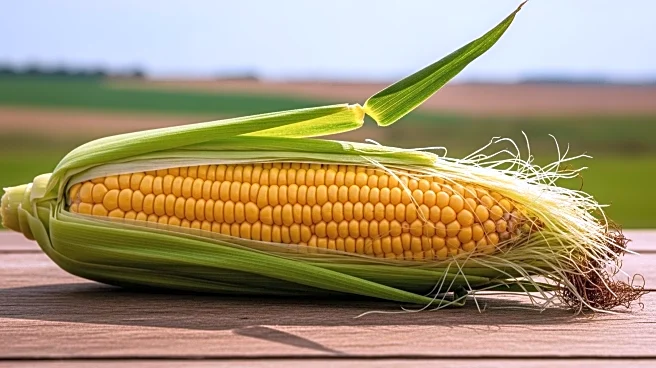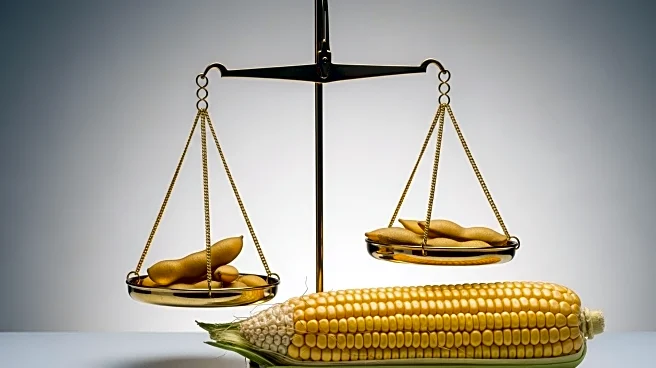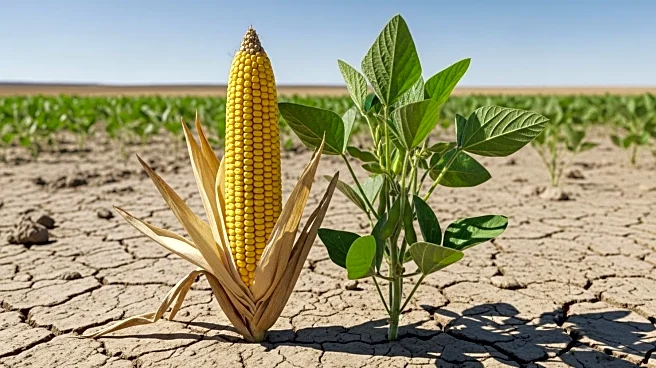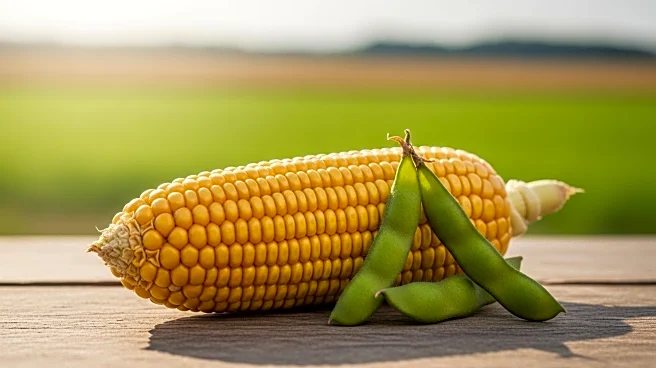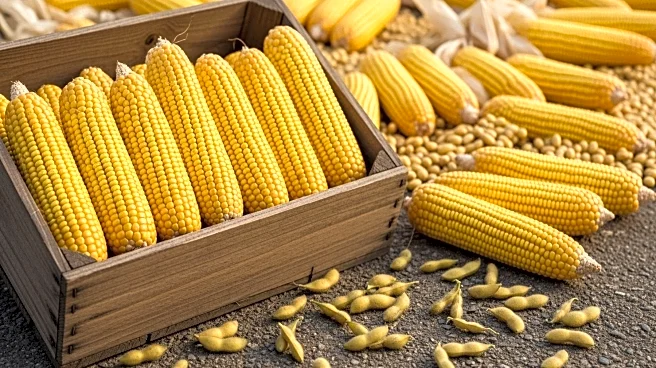What is the story about?
What's Happening?
High levels of fungal diseases, particularly southern rust and tar spot, are threatening corn yields across the U.S. Midwest. These diseases have emerged as significant concerns for farmers aiming to produce record-breaking yields to counteract low grain prices and rising input costs. The USDA had projected a record yield of 188.8 bushels per acre, but analysts expect this estimate to be revised down to 186.2 bushels per acre due to the impact of these diseases. Southern rust, which typically arrives too late to cause significant damage, reached Iowa by mid-July, exacerbated by the state's second-wettest July on record. This early arrival has allowed the disease ample time to spread, affecting photosynthesis in corn plants and potentially reducing kernel size and overall yields.
Why It's Important?
The outbreak of these diseases poses a significant threat to the U.S. corn industry, which is a major component of the agricultural economy. Farmers are already struggling with low grain prices and high production costs, and reduced yields could further strain their financial stability. The potential decrease in corn supply could also impact related industries, such as livestock feed and ethanol production, which rely heavily on corn. Additionally, the situation underscores the vulnerability of agricultural systems to climate and disease pressures, highlighting the need for effective disease management strategies and resilient crop varieties.
What's Next?
Farmers are beginning to harvest crops in areas where disease has caused premature plant death. The full extent of yield losses will become clearer as the harvest progresses. There is a possibility of increased fungicide use in future growing seasons, although this adds to production costs. The USDA's upcoming monthly report will provide updated yield estimates, which could influence market prices and farmer decision-making. Stakeholders, including agricultural researchers and policymakers, may need to focus on developing more robust disease management practices and supporting farmers through financial and technical assistance.
Beyond the Headlines
The current situation highlights broader issues in agricultural sustainability and the impact of climate variability on crop production. The increased prevalence of diseases like southern rust may be linked to changing weather patterns, suggesting a need for adaptive strategies in farming practices. This could involve breeding disease-resistant crop varieties and implementing integrated pest management systems. The economic pressures faced by farmers also raise questions about the long-term viability of current agricultural models and the need for policy interventions to support rural economies.
AI Generated Content
Do you find this article useful?
